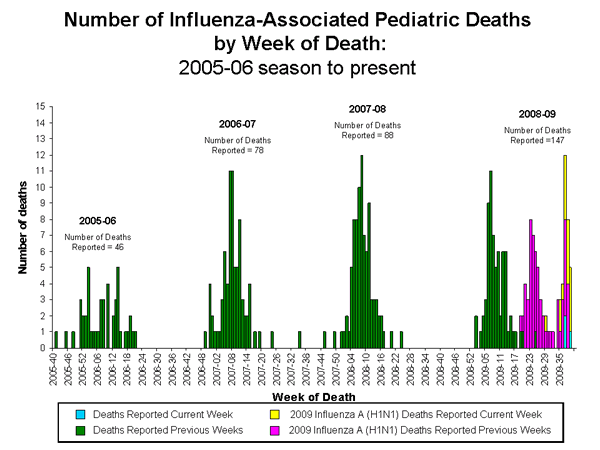
This is the picture that is worth 1000 words, and it is what informs the rest of this post.
The fall outbreak, nationally, is now officially worse than the spring outbreak. We are not seeing any cases here in Brighton yet, but we will soon — the outbreak map:
now shows New York in widespread brown, along with the rest of the country.
First of all, even though the H1N1 vaccine is not available to us yet, the risk of the wild flu is now high enough for the potential vaccine risks to be acceptable. I now recommend it highly, especially for the high-risk populations: pregnant, obese, young, health care workers, parents on newborns, and those and with preexisting conditions.
Secondly, there are not very many plausible explanation for the summer vacation that the flu takes. The incidence curve and the mortality curve correlate well with seasonal variations in Vitamin D levels, due to differing sunlight-to-skin exposures:

The science behind this connection is not conclusive, but it is a whole lot better than that purported for the so-called vaccine-autism connection, and the downside of “just-in-case” Vitamin D supplementation is negligible, which cannot be said for “just-in-case” vaccine refusal. So vaccine, Vitamin D, hygiene, avoiding crowds, “Dracula cough” –

and liberal school attendance policy remain my recommendation; taking Tamiflu prophylactically is not, except for the very high risk individuals.
The role for Tamiflu is in early, aggressive treatment of identified high-risk individuals who actually have flu, which means that rapid availability of urgent care is the key to minimizing complications. Looking at the so-called “Quality Indicators” by which practices are judged in New York, we find that the state is interested in many factors such as up-to-date immunizations, lead testing, weight and activity counseling — all laudable goals — but not availability. So the practice that dumps urgent care on emergency rooms to concentrate on crossing the T’s and dotting the I’s in preventive care will actually look like a higher-quality practice than one that actually takes care of sick children. I hope I am not the only one who finds this ironic.
